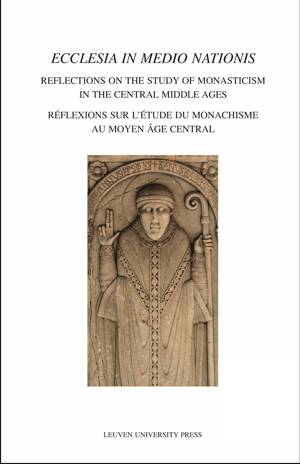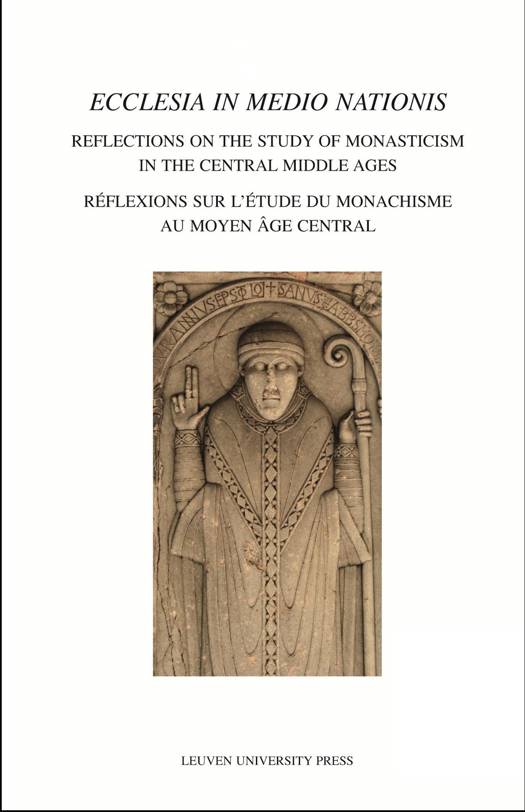
- Afhalen na 1 uur in een winkel met voorraad
- Gratis thuislevering in België vanaf € 30
- Ruim aanbod met 7 miljoen producten
- Afhalen na 1 uur in een winkel met voorraad
- Gratis thuislevering in België vanaf € 30
- Ruim aanbod met 7 miljoen producten
Zoeken
Ecclesia in medio nationis E-BOOK
€ 34,00
+ 34 punten
Omschrijving
The role of monastic institutions in society during the Central Middle Ages has been much debated in medieval studies. Some scholars saw monasticism as the principal motivator of economic, social, intellectual and 'spiritual' progress in human society, while others regarded monastic ideology as fundamentally anti-social and oriented towards itself.
These debates seem to have lost some of their relevance to the present-day scholar. Today monasticism is studied as a social entity which needed interactions with the outside world, not only to subsist in a physical sense, but also to give a clear sense of purpose to its members. Drawing on recent trends in historical scholarship, this volume seeks to identify some of the major questions that will dominate research into monasticism in the years to come. Contributions deal with the evolution of monasticism itself, its links with aristocracy, the economic relations of religious communities and their physical and ideological boundaries, and the representation of the outside world in monastic manuscripts.
Les contributions rassemblées dans ce volume présentent un point de vue à la fois multiple et multidisciplinaire sur l'état de la question dans l'historiographie du monachisme, un domaine de recherche dont la complexité s'avère désormais incontestable. Il s'agit de réflexions portant sur l'évolution du monachisme, ou d'études approfondissant les liens entre le monachisme et l'aristocratie ou les réalités économiques, explorant les liens physiques et idéologiques avec le monde extérieur, sans oublier des analyses portant sur les représentations du monde extérieur dans les manuscrits médiévaux.
These debates seem to have lost some of their relevance to the present-day scholar. Today monasticism is studied as a social entity which needed interactions with the outside world, not only to subsist in a physical sense, but also to give a clear sense of purpose to its members. Drawing on recent trends in historical scholarship, this volume seeks to identify some of the major questions that will dominate research into monasticism in the years to come. Contributions deal with the evolution of monasticism itself, its links with aristocracy, the economic relations of religious communities and their physical and ideological boundaries, and the representation of the outside world in monastic manuscripts.
Les contributions rassemblées dans ce volume présentent un point de vue à la fois multiple et multidisciplinaire sur l'état de la question dans l'historiographie du monachisme, un domaine de recherche dont la complexité s'avère désormais incontestable. Il s'agit de réflexions portant sur l'évolution du monachisme, ou d'études approfondissant les liens entre le monachisme et l'aristocratie ou les réalités économiques, explorant les liens physiques et idéologiques avec le monde extérieur, sans oublier des analyses portant sur les représentations du monde extérieur dans les manuscrits médiévaux.
Specificaties
Betrokkenen
- Uitgeverij:
Inhoud
- Aantal bladzijden:
- 200
- Taal:
- Nederlands
- Reeks:
Eigenschappen
- Productcode (EAN):
- 9789461661111
- Verschijningsdatum:
- 7/04/2017
- Uitvoering:
- E-book
- Beveiligd met:
- Digital watermarking
- Formaat:

Alleen bij Standaard Boekhandel
+ 34 punten op je klantenkaart van Standaard Boekhandel
Beoordelingen
We publiceren alleen reviews die voldoen aan de voorwaarden voor reviews. Bekijk onze voorwaarden voor reviews.










